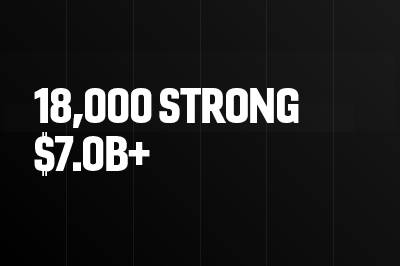XaaS (commonly pronounced “zass”) is not a math equation. It stands for “everything-as-a-service,” and is a delivery model increasingly relied upon by the government to generate more effective IT and mission outcomes. XaaS is a hybrid, multi-cloud managed service that gives agencies the benefits of public cloud and cloud models in their data centers. Agencies using this managed service can increase or decrease IT capacity, paying only for what they use. XaaS reduces risks, modernize systems, optimized operations, and instantiation cloud propelling agencies to meet FITARA (Federal Information Technology Acquisition Reform Act) and modernization milestones. The XaaS model supplements or replaces traditional IT delivery models and is focused on providing newer cloud based technology – ultimately more scalable and nimble solutions.
Why XaaS?
XaaS is a managed service model that includes delivering the IT hardware and software necessary to run an enterprise or to support edge requirements (and anything in between). Agencies can use XaaS to access only IT hardware and software, or in a fully managed service the provider delivers the IT hardware, software, and resources necessary to maintain, operate, and administer the environment. In either case, the XaaS model delivers outcomes to customers.
The objective is to deliver the volume of IT resources customers requires for the amount of time they require them. Customers can use this model to modernize and optimize systems, while simultaneously moving their agency into cloud. It gives the customer access to scalable IT solutions, IT operations, and IT security teams dedicated to providing those services so the customer can:
- Focus their undivided attention on any challenges.
- Deploy new capabilities.
- Strategically plan for new requirements.
There are many benefits to using managed services. In addition to those mentioned above, XaaS also facilitates access to the talent necessary to run enterprise IT, but does so in a cloud model. This helps the federal government fill those gaps as their organizations transition from traditional IT to the cloud. One critical area where XaaS can help fill a gap is in cybersecurity.
As the July 2023 National Cyber Workforce and Education Strategy pointed out, there are hundreds of thousands of vacant cyber jobs. This means that the XaaS model and managed services can help the government deliver critical IT capability and capacity. When government departments and agencies don’t have the combination of managed services and XaaS, they must build their own systems and retain technical talent in house. This leads to outdated software, antiquated hardware, and fighting an uphill battle in the competition for talent.
As the federal government takes advantage of XaaS to help realize the vision of a hybrid multi-cloud enterprise, consider how managed services can be used in the XaaS model to help the government deliver better outcomes.
Managed Services: A Cornerstone of XaaS
There are a variety of different ways to use managed services to successfully implement XaaS, allowing for flexibility:
-
Fully managed services
Providers take complete responsibility for a customer’s IT system operation and management, offering the highest tiers of support. This can include hardware, operating software, maintenance, and system administration.
-
A la carte services
Customers may only require specific functions offered as managed services, such as incident response or patch management. These services come with well-defined boundaries and service level agreements (SLAs) to outline the work and ensure successful performance.
-
Hybrid support
Providers extend services beyond platform support to include application management, development, and database administration. This mix of services empowers agencies to tackle complex challenges with ease.
-
Managed capacity
Providers tailor managed services to customer requirements, converting traditional staffing into customized solutions. In this instance, SLAs and pricing are collaboratively developed to meet specific needs.
Assessing Managed Services
There are several considerations in assessing managed services and providers. The starting point? Identify the total cost of the current IT operations, which is not always accurately reflected in the budget. Understanding how much an organization is currently spending helps calculate the cost savings of moving to a managed service.
It’s also important to consider the agency’s current and future workforce capabilities. Given the benefits of accelerating IT modernization and improving service delivery, agencies are recognizing that even if moving to a managed service is cost-neutral from a budget standpoint, the ability to focus finite agency resources on its mission more than justifies the switch.
When assessing managed service providers, there are a few things to consider:
- Whether they have experience and relevant (in size and scope) comparable past performance working with other federal agencies.
- Whether they have the experience and talent to support the full array of enterprise IT services.
- Whether they are capable of delivering a flexible range of services across the managed service spectrum from fully to minimally managed.
Benefits of the Model
There are numerous benefits to using the managed service model, which is why there has been a marked increase in its use in the federal IT market. Some of the many benefits include:
-
Reduced costs
Services and resources are provided in one price to the government and scale together, simplifying the costing process.
-
Improved mission focus
Customer personnel and expertise are focused on generating positive outcomes rather than being internally focused on operating the data center. This creates better alignment between an agency’s limited resources and its mission.
-
Streamlined contracts
The contract administration burden is reduced. Instead of managing several hardware, software, and services contracts to attain a series of outcomes, one contract is administered.
-
Agile performance
The managed service is an integrated solution and is designed to deliver more effective results than traditional operating and contractual models. Having a more current technological environment that is integrated into the public cloud allows the product to adapt to changing mission requirements and means greater agility and responsiveness within the system.
The rapidly evolving nature of IT modernization means custom-built and legacy systems are quickly becoming outdated. On top of that, government departments and agencies are continually asked to do more with less – especially when it comes to IT. Using managed services to take advantage of cloud computing and implement the XaaS model allows the government to operate more effectively and efficiently, and to focus its attention on mission critical goals and acquiring talented professionals in this challenging workforce environment.






